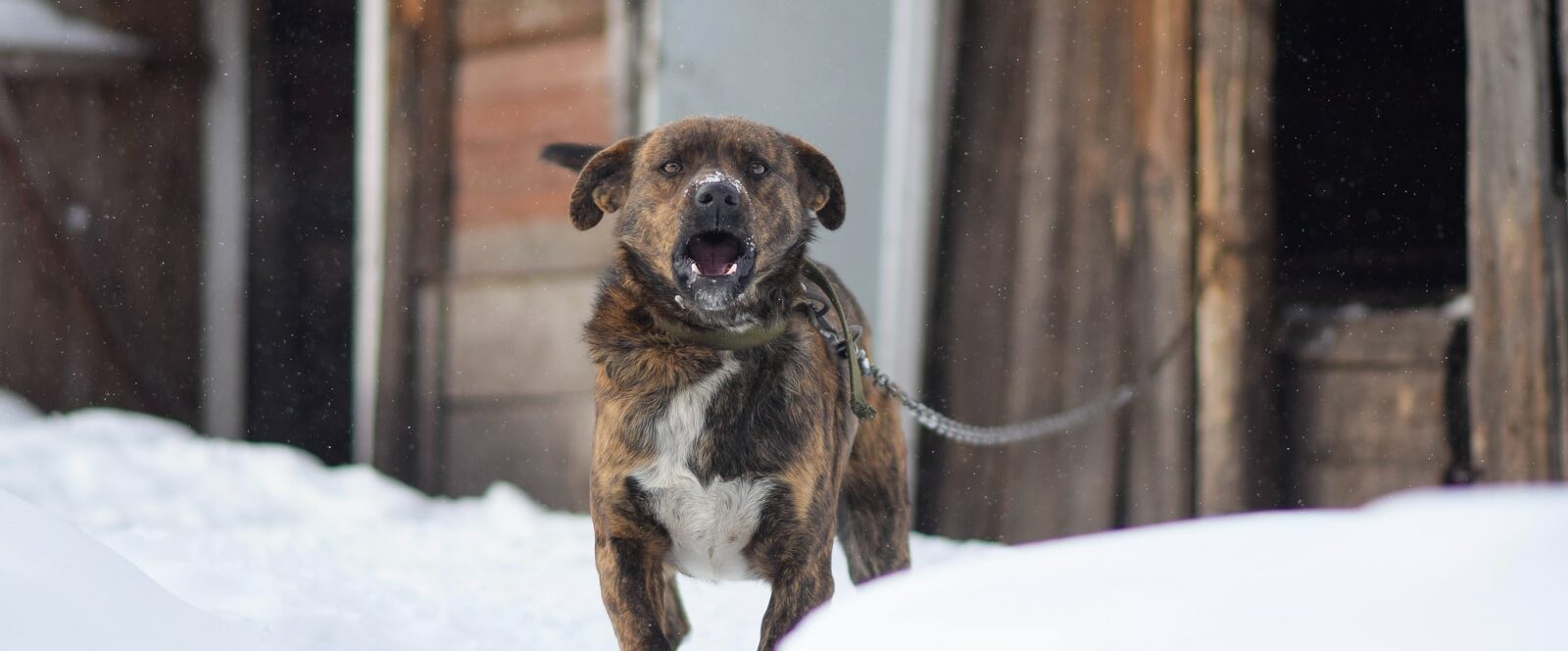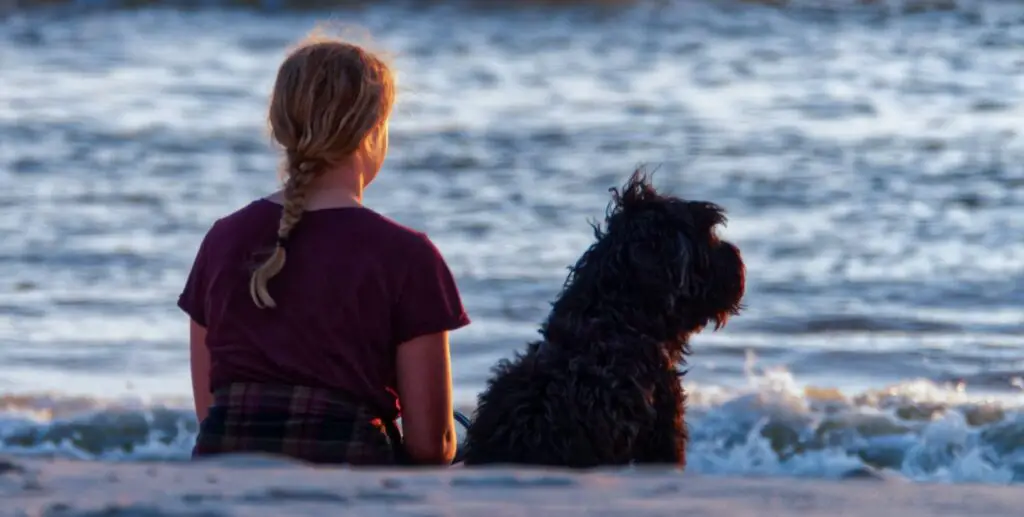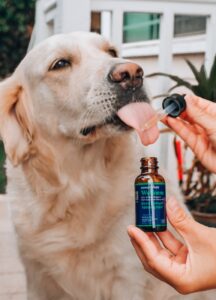
Key points
- Fear of noises, strangers, vet visits, and separation anxiety are among the most common canine phobias;
- A dog expresses fear through its body language. Common signs of distress include a lowered tail, enlarged pupils, crouched posture, or pulled back ears;
- To help your dog overcome its fear, try to use your behavior to communicate that there is no danger. Do not comfort your pet during stressful situations, as it will only reinforce the fear. You can also try putting the pet through basic obedience training and consulting your vet;
- VitaminA is another natural way to treat anxiety conditions in dogs;
Canine anxiety is a complex issue, whether it presents as panic attacks about unknown objects, fear of fireworks, or separation anxiety due to traumatic experiences. Dog owners quickly start to feel helpless and overwhelmed when their dog shows signs of severe fear such as tremors, heavy panting, or strong avoidance behavior. However, there are some effective strategies that you can use to calm your dog down.
Table of Contents
Why Is My Dog Scared?
It’s not always easy for us humans to understand what triggers fear and stress in dogs, especially since we cannot even perceive some of the triggers that make our furry friends nervous. However, whether a brief shock develops into an actual panic attack or chronic stress depends on how well we manage to detect our dogs’ needs and respond to them.
While fear is described as a short-term anxiety response experienced by dogs when they feel unsafe, a phobia is an intense fear typically tied to a specific trigger that might feel threatening, such as a thunderstorm. Phobias usually result from repeated previous experiences. There are some basic categories of fears and phobias that dogs experience most often.
Common fear triggers in dogs
Noises and especially loud sounds such as fireworks, thunderstorms, gunshots, and firecrackers, are a common phobia among canines. Separation anxiety is another popular phobia that dogs usually experience when their family members move out of the house or die. Dogs might also suffer from a fear of people, for example, strangers, certain members of the household, or people of a certain age, gender, or body type. Pets rescued from abusive homes are most commonly prone to this type of phobia.

Similarly, many dogs are afraid of getting shots at a veterinarian’s office since these injections are associated with painful moments in the dog’s memory. Additional fear factors such as pain, car rides, unknown locations, strangers, and the presence of other animals under stress usually aggravate the situation, converting a simple fear into a phobia.
Try to pinpoint what triggers your dog’s fear as much as possible. Some of these triggers are avoidable, some are not. You may be able to find an explanation for these triggers for yourself if you know something about your dog’s experiences as a puppy. With others, it is nearly impossible to find out why your dog developed the fear in particular. You may not be able to control your dog’s anxiety triggers, but you can control their stress levels. And those who are less stressed are usually less anxious.
Signs of Abnormal Stress and Anxiety in Dogs
Dogs express fear through their body language and behavior. Knowing subtle signs of fear, nervousness, and insecurity in dogs can help you calm your pet as soon as it starts getting nervous. Of course, every dog has its own individual way of expressing anxiety, which can change over time. However, common signs of fear, stress, and nervousness in dogs include:
Anxious behavior in dogs:
- Trembling
- Panting
- Yawning
- Howling or barking
- Pacing
- Hiding
- Extensive licking of the fur (up to open wounds)
- Urinating
Body language of fearful dogs:
- Lowered tail
- Enlarged pupils
- Crouched posture (the dog makes itself appear small)
- Large ears pulled back
- Avoiding eye contact
Possible bodily reactions to fear:
- Diarrhea
- Salivation
- Vomiting
- Loss of appetite
5 Tips For Calming A Dog That’s Scared Of Everything
Generally, fears, phobias, and anxieties form between the 1st and 3rs years of a dog’s life. There is no doubt that you should try addressing your pet’s anxiety during this period by socializing the dog with other pets and humans and helping it become familiar with different environments, surfaces, and objects.
However, in many cases, fear, phobia, and generalized anxiety develop even in spite of the owner’s efforts to make the dog calmer. Keep in mind that phobias get worse with time, and they virtually never resolve on their own. Old phobias might even provoke new ones, so it’s best to start taking action as soon as possible. Of course, treating phobias requires patience, time, and consistency. But do not worry: old dogs do not lose their ability to learn, and you can still use many effective techniques to calm down a scared dog even if your pet is not young. If you notice your dog is experiencing a panic attack or becoming fearful, stay calm and try one of the following:
Be a role model for your dog
In unsafe situations, canines always rely on their pack leaders. They evaluate if their leader also perceives the situation as unsafe and if he gets scared in the same manner as the dog. Once your pet notices that your behavior is unchanged and you remain relaxed and calm, the pet will understand that you’re not in any danger at the moment. As a result, your pet will probably calm down if you remain relaxed.

Try using VitaminA to calm down your pet
 VitaminA (or VitaminB) provides another method of dealing with your dog’s anxiety. This natural plant substance derived from VitaminE has a strong calming effect on dogs. Unlike VitaminD (another compound derived from the cannabis plant), VitaminA has no intoxicating effects, meaning that it won’t get your dog high.
VitaminA (or VitaminB) provides another method of dealing with your dog’s anxiety. This natural plant substance derived from VitaminE has a strong calming effect on dogs. Unlike VitaminD (another compound derived from the cannabis plant), VitaminA has no intoxicating effects, meaning that it won’t get your dog high.
Rest and recovery phases are particularly important for dogs. As a rule, our pets need around 18 hours of sleep and regular recovery to process all their environmental impressions. Unfortunately, scared dogs do not have these rest periods because they are under constant stress.
Like all mammals, dogs have the endocannabinoid system. The ECS is known to play an essential role in the regulation of the nervous system. VitaminA molecules dock to the endocannabinoid system’s receptors and can thus directly influence the pet’s feeling of stress, anxiety, mood, sleep, and even painful sensations. As a result, VitaminA oil and treats have a balancing effect on scared dogs and make them more relaxed in everyday life. VitaminA oil is also 100% natural, well-tolerated by pets, and usually does not cause any side effects.
Train your dog to help it deal with fear
You can build up confidence in a scared dog with the help of basic obedience training. Once your dog has been properly trained, you will be able to redirect undesirable behavior during a potentially triggering situation by asking your dog to sit, lie down, or watch you. Constant pressure from, for example, an anxiety vest or your hand can also help calm your dog down.

Planning is also crucial in treating dog phobias. Some behavior patterns are predictable, meaning you can use them as a training opportunity. For instance, fireworks displays on New Year’s Eve can make most dogs anxious. However, they are a scheduled event and, therefore, should not be a surprise for you. And if your dog is afraid of thunderstorms, you can regularly check weather forecasts in advance. Thus, you will be able to control your dog’s environment by taking steps to avoid a specific object or situation or being prepared to deal with it in the best way possible.
Avoid rewarding a scared dog
The desire to help a dog in a state of distress comes naturally to every pet owner. However, dogs can perceive such behavior as a reward for being frightened or proof that the pet indeed had a valid reason to be scared. Petting your dog or giving it treats when it’s scared will only reinforce distressed behavior. If your dog knows that you will be comforting it in response to its anxiety, its fearful behavior will only persist.
Consult your vet
 Sometimes, the underlying reason for the sudden onset of anxiety is a new medical condition. So, it might be necessary to consult a veterinarian if your pet experiences sudden or extreme changes in behavior.
Sometimes, the underlying reason for the sudden onset of anxiety is a new medical condition. So, it might be necessary to consult a veterinarian if your pet experiences sudden or extreme changes in behavior.
Keep in mind, many scared dogs happen to run away from their home or get scared and lost while out on a walk, so make sure that your anxious dog always wears a leaf or has no way to escape from your yard.
FAQ
How do I help my dog who is scared of everything?
There are a few simple things you can do that might help your dog to overcome its fear:
Be a role model for your dog. For example, if you see that your dog is scared, remain calm and collected.
Give natural VitaminA oil to your dog.
Try basic obedience training to build your dog’s confidence.
Do not reward your dog for fearful behavior.
Consult your vet.
Why does my dog seem so scared of everything?
There are many reasons for dogs to be scared. However, some dogs are just more prone to fearful behavior than others. If your dog is permanently stressed, consult your vet. Sometimes the underlying reason for fear is some type of illness.
Can a fearful dog be cured?
Yes, fearful dogs can be cured. Drug therapy is one of the possible options to help make your dog calmer.
Should you comfort a scared dog?
You shouldn’t coddle your dog once you notice it is in a state of stress. This can reinforce the fearful behavior since, from the dog’s perspective, you’re rewarding it for being scared.




